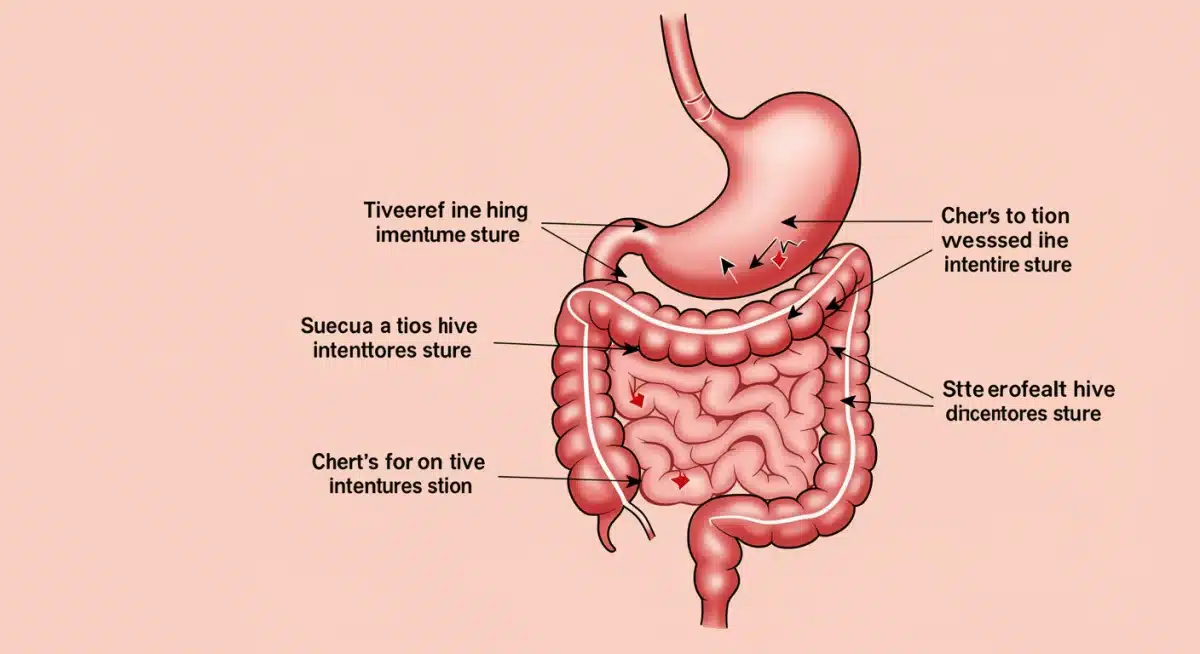Baby Colic: Symptoms, Causes, & Relief Techniques

Advertisement
Understanding baby colic: symptoms, causes, and effective relief techniques is essential for parents navigating the challenging period of infant distress, offering strategies to alleviate their baby’s discomfort and restore calm to the household.
As new parents, few experiences are as unsettling as witnessing your baby’s inconsolable crying, especially when it seems to come out of nowhere. This often leads to the question: could it be colic? Understanding baby colic: symptoms, causes, and effective relief techniques is not just about identifying a condition; it’s about finding peace for both your little one and your family.
Deciphering Baby Colic: What Exactly Is It?
Baby colic is a term often used to describe excessive, frequent crying in an otherwise healthy baby. It’s a common, albeit frustrating, phase for many infants and their families. While the exact definition can vary slightly, healthcare professionals generally adhere to a set of criteria to diagnose colic, often referred to as the ‘Rule of Threes’.
Advertisement
This rule suggests that a baby’s crying should last for at least three hours a day, occur at least three days a week, and persist for at least three weeks. The crying episodes are typically intense, occurring without an apparent cause, and can be incredibly challenging for parents to manage. It’s important to remember that colic is a temporary condition, often resolving on its own by the time the baby is three to four months old, though some cases may extend a bit longer.
Understanding these diagnostic criteria helps parents and pediatricians distinguish colic from other potential medical issues. It assures parents that their baby is generally healthy, even if experiencing significant discomfort. The key characteristic of colic is that despite the intense crying, the baby continues to feed well, gain weight, and shows no other signs of illness.
In conclusion, baby colic is defined by prolonged periods of unexplained crying in healthy infants, following a specific pattern. Recognizing these characteristics is the first step toward managing this challenging, yet temporary, developmental stage.
Advertisement
Recognizing the Symptoms: Is Your Baby Colicky?
Identifying colic can be distressing for parents, as the symptoms often mimic those of other conditions. However, several distinct signs can help you determine if your baby is experiencing colic. These symptoms typically appear within the first few weeks of life, intensify around six weeks, and then gradually subside.
The most prominent symptom is, of course, the crying itself. Unlike typical crying that might indicate hunger or a wet diaper, colicky crying is usually more intense, piercing, and prolonged. It often starts suddenly, sometimes at the same time each day, frequently in the late afternoon or evening. The baby may appear to be in pain, even though no clear cause is evident.
Typical Crying Patterns
- Predictable timing: Crying often occurs at similar times daily, particularly in the evening.
- High-pitched screams: The cries are usually louder and more intense than regular crying.
- Inconsolable distress: Despite attempts to soothe, the baby remains distressed.
Beyond the crying, physical manifestations can also point towards colic. Babies might clench their fists, arch their backs, pull their legs up towards their abdomen, and have a distended or firm belly. These physical signs suggest discomfort, possibly related to gas or indigestion, although the exact link is still debated among experts. Observing these combined symptoms helps paint a clearer picture.
Furthermore, during these episodes, babies may pass gas or have bowel movements, which can sometimes provide temporary relief. However, the relief is often short-lived, with crying resuming shortly after. It’s crucial to differentiate these signs from symptoms of illness, such as fever, vomiting, or lethargy, which would warrant immediate medical attention.
In summary, colicky babies exhibit specific crying patterns and physical signs of discomfort, often at predictable times. Recognizing these symptoms is vital for parents to understand what their baby is experiencing and to seek appropriate support.
Exploring the Potential Causes of Baby Colic
Despite extensive research, the precise cause of baby colic remains elusive. This lack of a definitive answer can be frustrating for parents seeking a clear solution. However, several theories and contributing factors are commonly discussed, offering insights into why some babies experience colic more than others.
One prominent theory points to an immature digestive system. Newborns’ digestive tracts are still developing, and this immaturity can lead to difficulties in processing food, resulting in gas, bloating, and discomfort. This theory aligns with observations that many colicky babies exhibit signs of gas during their crying spells, such as a distended belly and increased flatulence. The digestive system’s inability to efficiently break down lactose or certain proteins in milk could also contribute to irritation.

Commonly Discussed Contributing Factors
- Immature digestive system: Difficulty processing food and gas buildup.
- Food sensitivities/allergies: Reactions to certain proteins in formula or breast milk.
- Gastroesophageal reflux (GER): Stomach acid flowing back into the esophagus.
- Infant migraine: A less common theory suggesting neurological discomfort.
Another area of focus is food sensitivities or allergies. For breastfed babies, certain foods in the mother’s diet, such as dairy, soy, wheat, or nuts, might pass into breast milk and trigger a reaction in the baby. For formula-fed infants, specific proteins in cow’s milk-based formulas could be the culprit. Eliminating these potential allergens from the mother’s diet or switching to a hypoallergenic formula under medical supervision can sometimes provide relief.
Gastroesophageal reflux (GER) is also considered a potential factor. While all babies experience some degree of reflux, in some, it can be more severe, causing pain and discomfort that manifests as colicky crying. Irritation from stomach acid flowing back into the esophagus can be very uncomfortable for an infant, leading to prolonged crying episodes, especially when lying flat.
Psychological and emotional factors are also explored. Some research suggests that parental anxiety or stress might inadvertently contribute to a baby’s fussiness, though it’s often a feedback loop where a colicky baby increases parental stress. Additionally, some theories propose that colic could be a baby’s way of releasing pent-up energy or overstimulation from the day.
In conclusion, while no single cause explains baby colic, a combination of digestive immaturity, food sensitivities, reflux, and even environmental factors likely plays a role. Understanding these potential causes helps parents and healthcare providers explore various avenues for relief.
Effective Relief Techniques: Soothing Your Colicky Baby
Finding effective relief for a colicky baby often involves a process of trial and error, as what works for one baby may not work for another. The goal is to soothe the baby, reduce their discomfort, and provide some respite for both the infant and the parents. A multi-faceted approach, combining various techniques, often yields the best results.
One of the most widely recommended approaches involves soothing techniques that mimic the womb environment. Swaddling, for instance, can provide a sense of security and containment, reducing the baby’s startle reflex and promoting calmness. Gentle rhythmic movements, such as rocking, swaying, or using a baby swing, can also be very effective. Many parents find that car rides, with their consistent motion and white noise, can lull a colicky baby to sleep.
At-Home Soothing Strategies
- Swaddling: Provides security and reduces startle reflex.
- Rhythmic motion: Rocking, swaying, or car rides.
- White noise: Mimics womb sounds, such as a fan or specific apps.
- Warm baths: Can relax muscles and ease discomfort.
Addressing potential digestive discomfort is another key area. Burping your baby frequently during and after feedings can help release trapped air, preventing gas buildup. Some parents find relief by gently massaging their baby’s abdomen in a clockwise direction or performing ‘bicycle legs’ movements to help pass gas. Over-the-counter gas drops, containing simethicone, are often used, though their effectiveness varies among infants.
Dietary adjustments can also play a significant role, especially if food sensitivities are suspected. For breastfeeding mothers, temporarily eliminating common allergens like dairy, soy, or wheat from their diet can be beneficial. For formula-fed babies, consulting a pediatrician about switching to a hypoallergenic or partially hydrolyzed formula might be an option. However, any dietary changes should always be made under the guidance of a healthcare professional to ensure the baby’s nutritional needs are met.
Finally, ensuring a calm and consistent environment can help. Reducing overstimulation, sticking to a routine, and offering a pacifier for non-nutritive sucking can provide comfort. It’s also vital for parents to take breaks and seek support, as managing a colicky baby can be emotionally and physically draining. Remember that your well-being is just as important as your baby’s.
In conclusion, soothing a colicky baby involves a combination of comforting techniques, digestive aids, and potential dietary adjustments. Patience, persistence, and seeking support are crucial components in navigating this challenging phase.
When to Seek Professional Help for Colic Concerns
While colic is generally a benign and self-limiting condition, there are instances when professional medical advice is essential. Knowing when to consult a pediatrician can alleviate parental anxiety and ensure that no underlying medical issues are overlooked. It’s always better to err on the side of caution when it comes to your baby’s health.
One primary reason to seek medical attention is if your baby exhibits symptoms beyond typical colicky crying. These include fever, vomiting (especially projectile vomiting), diarrhea, blood in the stool, poor feeding, lethargy, or a lack of weight gain. These signs could indicate a more serious underlying condition that requires immediate medical evaluation and intervention. A pediatrician can rule out issues like infections, allergies, or gastrointestinal problems.

Red Flags Requiring Medical Consultation
- Fever: Any fever in a young infant warrants medical attention.
- Vomiting/Diarrhea: Especially if severe or persistent.
- Blood in stool: Could indicate an internal issue.
- Poor feeding/weight loss: Concerns about nutrition and growth.
- Lethargy/Unusual behavior: Any significant change in your baby’s usual demeanor.
Even if your baby’s symptoms align perfectly with colic, a visit to the pediatrician can provide reassurance and guidance. They can confirm the diagnosis, offer personalized advice on relief techniques, and discuss potential dietary changes safely. They might also suggest specific probiotics or other interventions that could help. Sometimes, simply having a professional confirm that your baby is healthy can significantly reduce parental stress.
Furthermore, if parental stress levels become unmanageable, or if you feel overwhelmed, isolated, or are struggling to cope, it’s crucial to reach out for help. Pediatricians can provide resources for parental support, connect you with support groups, or refer you to mental health professionals if needed. Remember, taking care of yourself is vital for taking care of your baby.
In conclusion, while colic is a common phase, parents should seek professional help if their baby exhibits any red flag symptoms, if they need confirmation of the diagnosis, or if they are struggling to cope with the challenges of a colicky infant. Early intervention and support can make a significant difference.
Coping Strategies for Parents: Navigating the Colic Journey
Caring for a colicky baby can be incredibly taxing, both physically and emotionally. It’s a period that tests patience, resilience, and often leads to feelings of helplessness and exhaustion. Developing effective coping strategies is not just beneficial but essential for parents to navigate this challenging journey without compromising their well-being.
One of the most important strategies is to seek support. This can come from your partner, family members, friends, or even support groups specifically for parents of colicky babies. Sharing your experiences and feelings can validate your struggles and remind you that you are not alone. Don’t hesitate to ask for help with household chores, meal preparation, or simply taking a break while someone else watches the baby.
Essential Parental Coping Mechanisms
- Seek support: Lean on partners, family, friends, or support groups.
- Take breaks: Step away, even for short periods, to recharge.
- Practice self-care: Prioritize sleep, nutrition, and personal time.
- Maintain perspective: Remember that colic is temporary and not your fault.
Prioritizing self-care, even in small ways, can make a significant difference. This might mean taking a short walk, listening to music, enjoying a warm cup of tea, or simply having a few moments of quiet time. Adequate sleep, though often elusive with a newborn, should be prioritized whenever possible, perhaps by sleeping when the baby sleeps, even if it’s during the day. Proper nutrition is also crucial to maintain energy levels and emotional stability.
Managing expectations and understanding that colic is not a reflection of your parenting skills is also vital. Colic is a developmental phase that affects babies indiscriminately. It’s not caused by anything you did or didn’t do. Accepting this can help alleviate feelings of guilt or inadequacy that often accompany the challenges of a colicky baby. Focus on providing comfort and love, even when it feels like nothing is working.
Developing a routine, even a flexible one, can sometimes bring a sense of predictability to the chaos. While colicky babies can be unpredictable, establishing consistent feeding, sleeping, and playtime schedules can help regulate their day and potentially reduce evening fussiness. Also, remember to protect your baby’s sleep during the day, as overtiredness can exacerbate crying episodes.
In conclusion, coping with a colicky baby requires a robust support system, dedicated self-care, and a healthy perspective. Remember that this phase is temporary, and your resilience as a parent will shine through as you navigate these challenging weeks.
Long-Term Outlook: What Happens After Colic?
The good news for parents enduring the relentless crying of a colicky baby is that colic is a temporary condition. The vast majority of infants outgrow colic by three to four months of age, with some cases extending up to six months. As the baby’s digestive system matures and they develop better self-soothing mechanisms, the intense crying episodes gradually subside, leading to a much calmer household environment.
Once colic resolves, most babies transition into typical infant behavior. They continue to grow and develop normally, without any long-term physical or psychological effects attributed directly to colic. There is no evidence to suggest that colicky babies are more prone to health problems or developmental delays later in life. This understanding provides immense relief to parents who often worry about the lasting impact of their baby’s early distress.
While the physical symptoms of colic typically vanish, the experience can leave a lasting impression on parents. The challenges faced during the colicky period often strengthen parental bonds and resilience. Parents who have navigated colic frequently report feeling more capable and empathetic, having developed a deeper understanding of their child’s needs and their own coping abilities. The period of intense crying, though difficult, often becomes a distant memory once the baby starts smiling and interacting more.
Some studies have explored potential links between infantile colic and later childhood behaviors, such as sleep problems or temperamental traits. However, these links are often weak and not consistently replicated across research. For the most part, once the colic subsides, babies are indistinguishable from those who did not experience the condition. Focus shifts to typical developmental milestones, feeding, and establishing healthy sleep patterns.
In conclusion, the long-term outlook for babies who experience colic is overwhelmingly positive. The condition resolves on its own, leaving no lasting negative effects on the child’s health or development. For parents, it’s a challenging phase that, while difficult, ultimately passes, allowing them to fully enjoy the joys of parenthood.
| Key Aspect | Brief Description |
|---|---|
| Definition | Excessive, unexplained crying in otherwise healthy infants, following the ‘Rule of Threes’. |
| Symptoms | Intense, prolonged crying (often evenings), clenched fists, arched back, distended belly. |
| Causes | Immature digestion, food sensitivities, reflux, or overstimulation are common theories. |
| Relief | Swaddling, rhythmic motion, white noise, burping, dietary adjustments, and parental support. |
Frequently Asked Questions About Baby Colic
The ‘Rule of Threes’ defines colic as crying for at least three hours a day, occurring at least three days a week, and persisting for at least three weeks. This helps distinguish colic from normal infant fussiness, ensuring the baby is otherwise healthy and thriving.
Yes, in some cases, certain foods in a breastfeeding mother’s diet, such as dairy, soy, or wheat, can pass into breast milk and trigger colicky symptoms in sensitive babies. Eliminating these foods under medical guidance may help reduce discomfort.
There is no specific medication that cures colic, as it’s a developmental phase. Some over-the-counter remedies like gas drops (simethicone) or certain probiotics may offer relief for some babies, but their effectiveness varies and should be discussed with a pediatrician.
Seek professional help if your baby has a fever, vomiting, diarrhea, blood in stool, poor feeding, lethargy, or isn’t gaining weight. These symptoms could indicate a more serious underlying condition that requires immediate medical attention and diagnosis.
Baby colic typically resolves on its own by the time an infant is three to four months old. In some instances, it might extend up to six months, but it is universally a temporary condition with no long-term health implications for the child.
Conclusion
Navigating the challenges of baby colic can be one of the most demanding experiences for new parents, marked by intense, unexplained crying that can test even the strongest resolves. However, armed with a deeper understanding of its symptoms, potential causes, and a range of effective relief techniques, parents can approach this phase with greater confidence and resilience. Remember that colic is a temporary condition, a developmental stage that almost all infants outgrow without any lasting effects. Prioritizing self-care, seeking support from your network and healthcare providers, and maintaining perspective are crucial for both your well-being and your baby’s. Though challenging, this journey ultimately strengthens the parent-child bond and provides invaluable lessons in patience and unconditional love.





